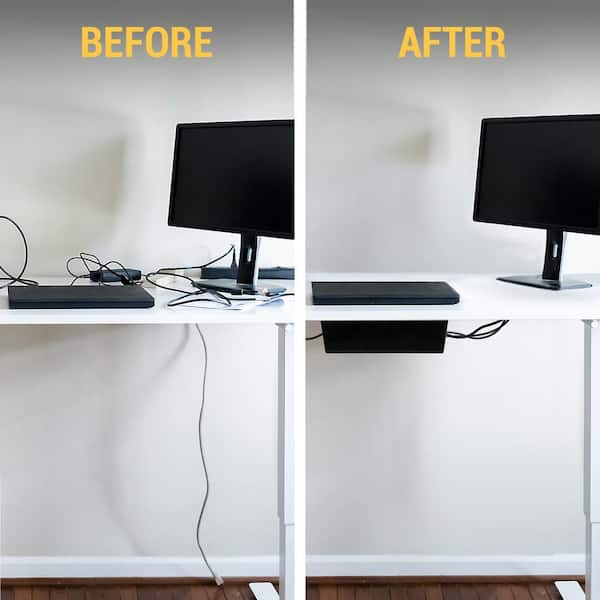
Quick Fix
30-Minute Cable Transformation
Achieve dramatic cable organization improvements in under 30 minutes with basic supplies.
Start by unplugging everything and grouping cables by function (power, data, display).
Use zip ties, velcro straps, and adhesive cable clips to create designated pathways
for each cable type.
Route power cables away from data cables to prevent interference. Hide excess cable
length behind desks or under desk surfaces. Label both ends of each cable for easy
identification. This quick approach provides immediate visual improvement and easier
future maintenance.
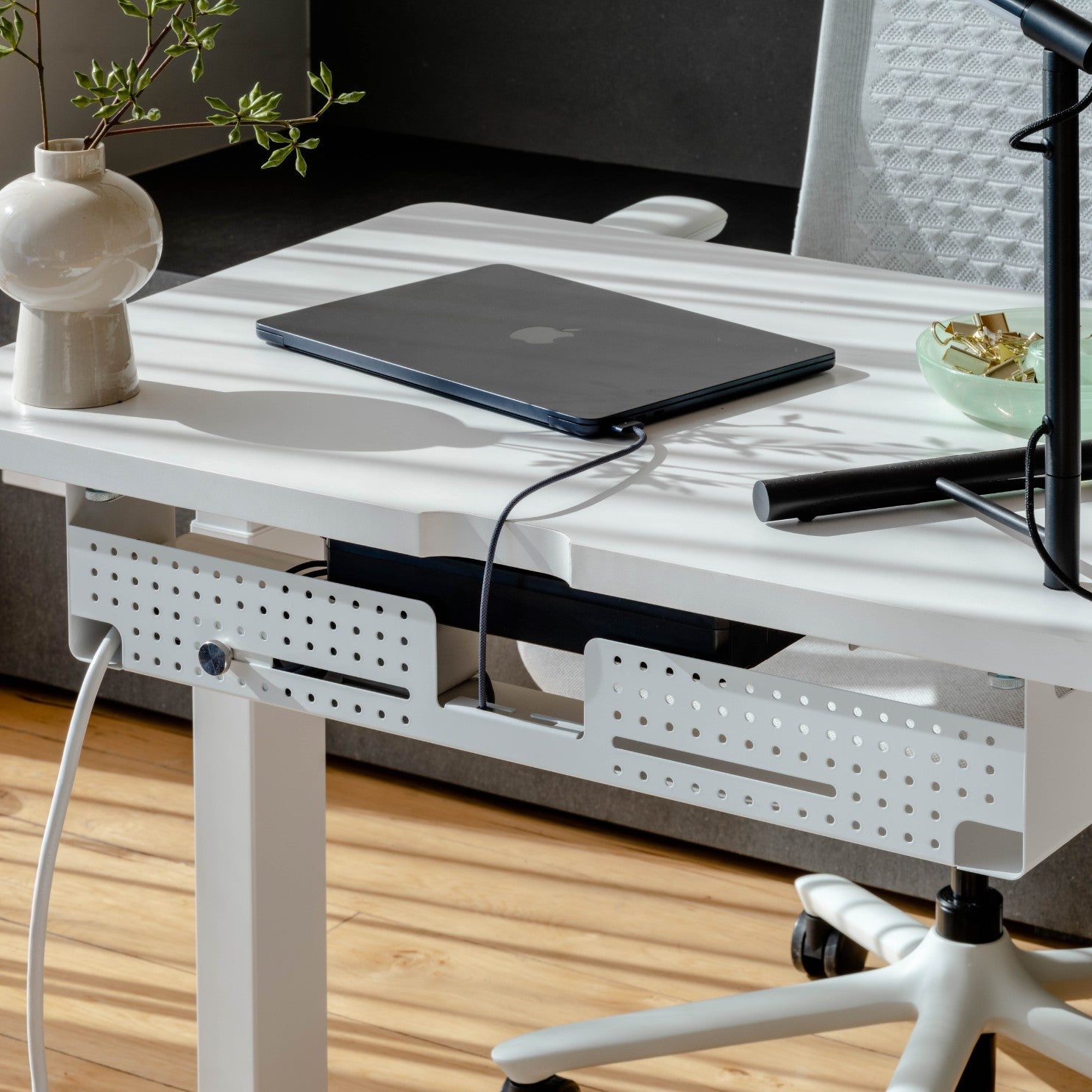
Beginner
Under-Desk Cable Trays
Under-desk cable trays provide hidden storage for power strips, excess cable length,
and power adapters. Install these trays beneath your desk surface using screws or
adhesive pads, creating a clean workspace while keeping power sources accessible
for maintenance and adjustments.
Choose trays with adequate ventilation for power strips and consider models with
built-in cable routing holes. Mesh trays allow airflow while containing cables,
while solid trays provide maximum concealment. Ensure trays can support the weight
of your power strip and connected devices.
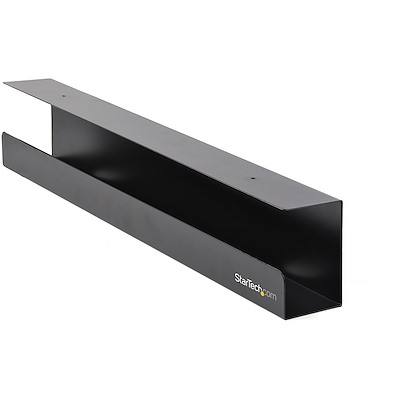
Beginner
Cable Routing Fundamentals
Effective cable routing follows natural pathways while avoiding trip hazards and
interference zones. Route power cables along walls or desk legs, keeping them away
from walkways. Use adhesive cable clips to guide cables along specific paths,
maintaining consistent spacing and alignment.
Separate power and data cables by at least 6 inches to prevent electromagnetic
interference. Group cables with similar destinations together for easier management.
Leave slight slack at connection points to allow for device movement and prevent
tension on plugs and ports.
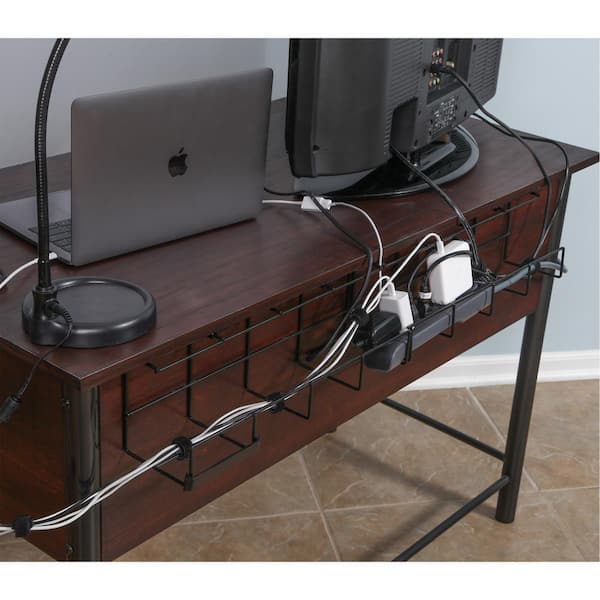
Advanced
Power Strip Optimization
Strategic power strip placement maximizes accessibility while minimizing visual impact.
Position strips in under-desk trays or behind furniture where they're hidden but
reachable for plugging and unplugging devices. Choose strips with adequate outlets
for current needs plus expansion for future devices.
Consider surge protection capabilities, especially for expensive electronics. Look
for strips with individual outlet switches for better power management. USB-enabled
strips can reduce the need for separate power adapters. Some models include mounting
hardware for secure placement.
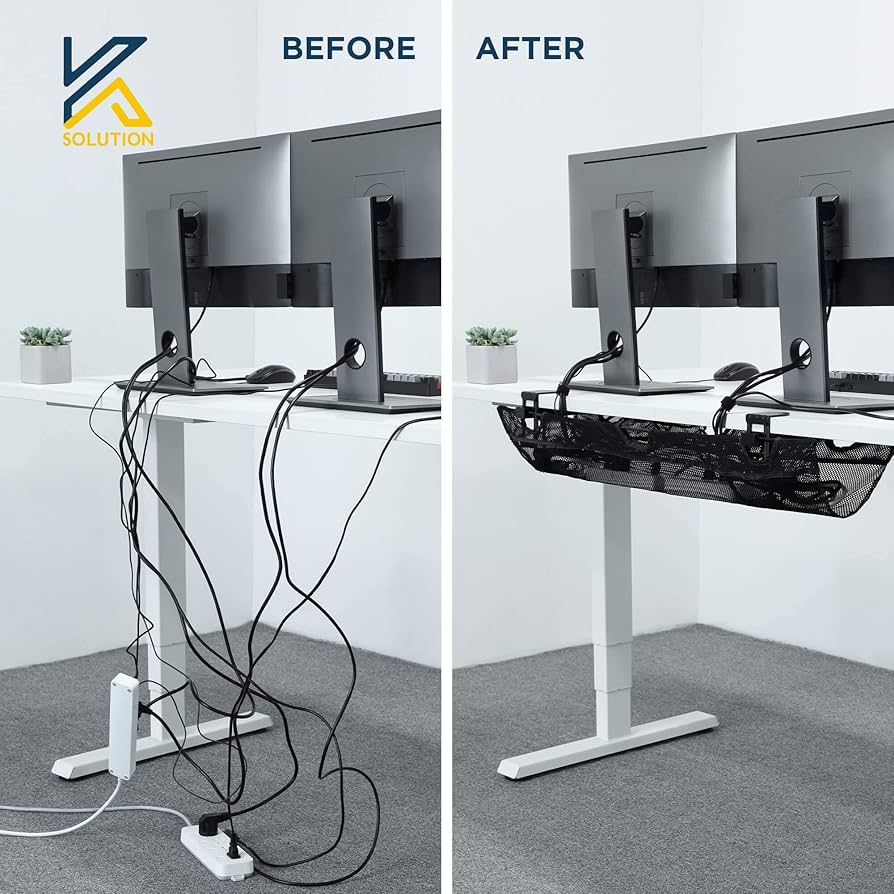
Quick Fix
Cable Labeling Systems
Clear labeling prevents confusion and reduces troubleshooting time. Use pre-printed
labels or write-on labels that indicate each cable's destination and function. Color-coded
labels can quickly identify cable types (power, HDMI, USB) without reading text.
Laminate hand-written labels for durability, or use heat-printed labels that won't
fade or peel. Label both ends of cables, as this helps with identification during
troubleshooting or when rearranging equipment. Keep a reference sheet mapping cables
to devices for complex setups.

Advanced
Power Adapter Management
Power adapters and wall warts create significant visual clutter and complicate cable
routing. Use adapter shelves or small plastic bins to contain these items within
cable management trays. Velcro straps can secure adapters to mounting surfaces,
preventing them from falling during connection changes.
Consider switching to compact power adapters or power strips with built-in USB
charging when possible. Bundle adapter cords using spiral cable wrap to reduce
tangling and improve organization. Leave adequate access space for adapter maintenance
and replacement.

Beginner
Safety Considerations
Proper cable management prevents trip hazards and electrical safety issues. Secure
all cables to prevent dragging across walkways, and avoid running cables under rugs
or carpet where they can overheat or become damaged. Use appropriate cable gauges
for power requirements to prevent overheating.
Inspect cables regularly for fraying, kinks, or damage. Replace damaged cables immediately.
Avoid overloading power strips beyond their rated capacity. Use GFCI outlets in areas
prone to moisture, and ensure all electrical connections are dry and secure.

Quick Fix
Temporary Cable Solutions
Renter-friendly cable management doesn't require permanent modifications. Adhesive
cable clips, velcro straps, and removable cable sleeves provide organization without
drilling holes or permanent installation. These solutions are perfect for testing
layouts before committing to permanent installations.
Use damage-free mounting strips for temporary cable routing. Large cable sleeves
can contain multiple cables in high-traffic areas without permanent attachment.
Free-standing cable management towers work well for floor routing without floor
penetration or wall mounting.

Advanced
Integrated Power Systems
Advanced cable management incorporates power delivery directly into furniture and
workspace design. Pop-up power outlets, USB charging stations, and built-in cable
routing eliminate visible cables while providing convenient access to power and
data connections.
Consider wire management grommets in desk surfaces for clean cable passage. Some
desks include integrated power and data management that keeps all connections hidden
while maintaining accessibility. These systems work best when planned during initial
furniture selection and layout design.




